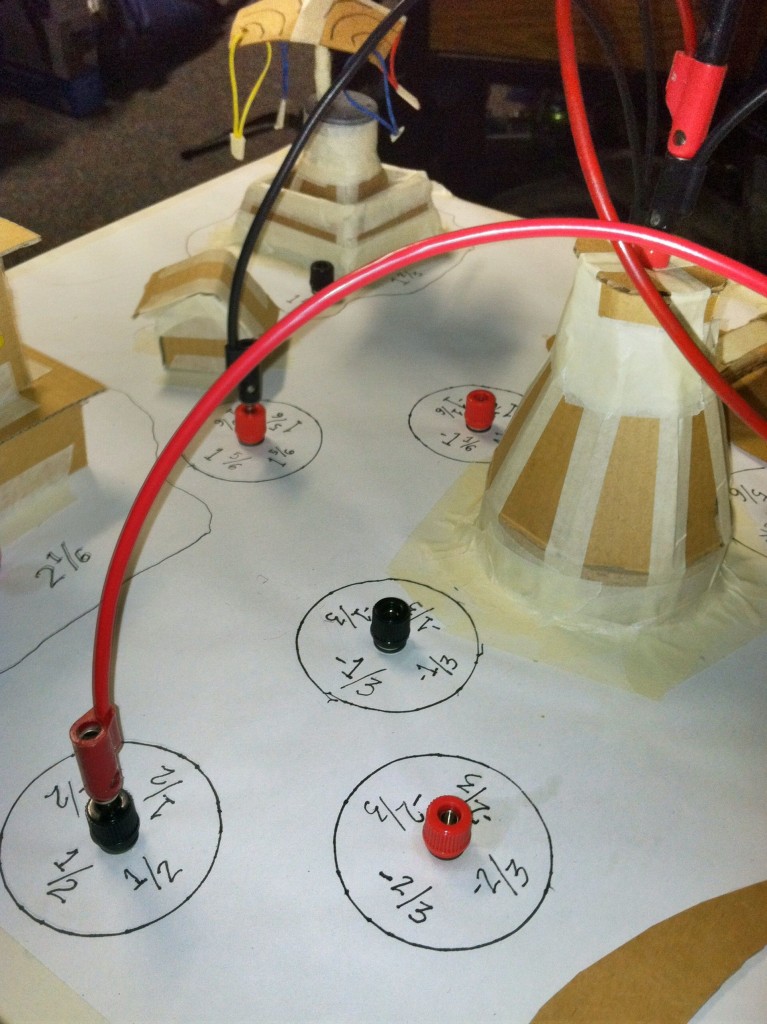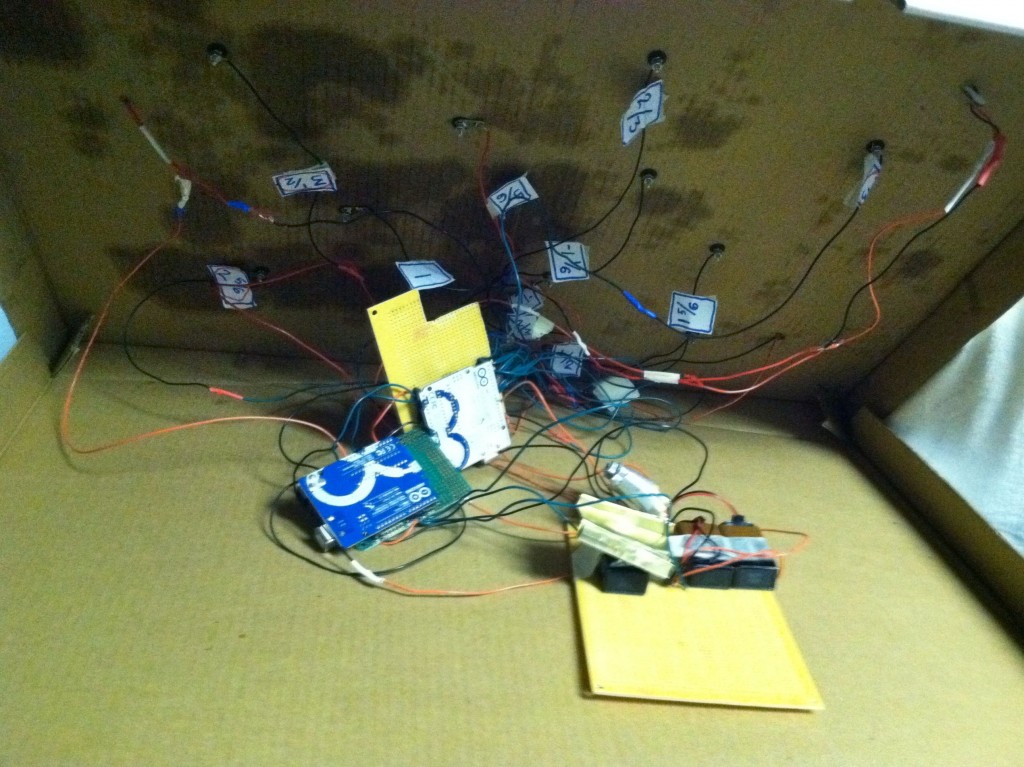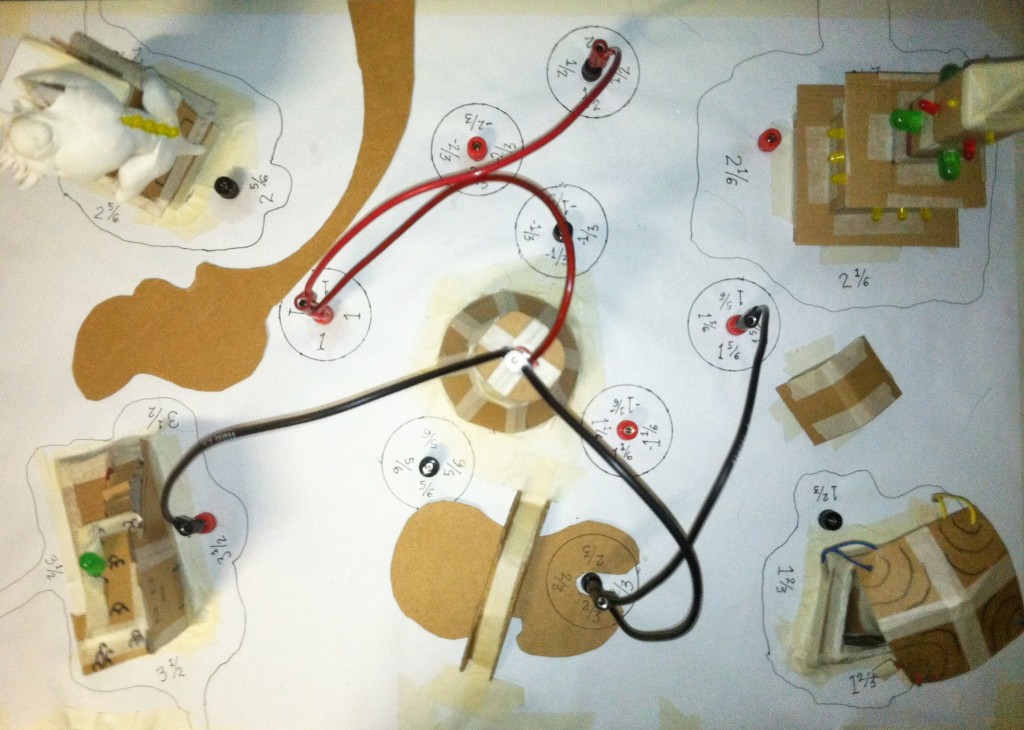Platform Theory
Dec 6th, 2012 by munica
Power Up utilizes one or more Arduinos, depending on the number of inputs and outputs utilized. Multiplexing and other hardware configurations would enable the use of fewer Arduinos, but they add complexity to this otherwise simple electronics project. The device obtains input via a number of electrical leads that are held at 5V. A user connects the desired inputs to a ground lead, pulling those inputs to 0V which the Arduino then detects. The Arduino then outputs a response based on the input. The inputs are separated into into two groups, choices and answers. The students connect a set of choices to a corresponding answer. In our implementation, there are 4 answer inputs and 8 choices. Each input is assigned a fraction such as 3 1/2, -2/3, or 1 5/6. The goal is combine the correct choices so that their sum would equal an assigned answer.
Power Up can teach more than fractions though. The choices could be words and the answers would be parts of speech. The students would then group the words into the correct parts of speech. A list of names could make up the choices, and the students would have to determine if they where part of the Union or Confederacy. The possibilities are nearly limitless. Regardless of the subject matter presented to the students, the Arduino interprets everything numerically in a more efficient manner, resulting in a facade. If Power Up is configured for grammar, the Arduino would not recognize that one input is a noun and another is a verb, it uses a far more computationally simple method to interpret the input.
For a complete explination of the software see the Software Theory
We selected banana plugs to be used as our connectors based on our research. However any type of connector or method of grounding the inputs would work. Though we only had 4 answer inputs, some could be combined to produce a total of 6 possible answers, corresponding to each side of a dice. The student would roll the dice and then have a limited amount of time to solve their puzzle for points. This basic game can be adapted to use other methods of selection and scoring. Problems that involved combining two answers to produce a new problem are worth extra, due to the increased difficulty.
When an answers is solved, the board outputs a signal to indicate success. This can act as an incentive to the students, causing them to want to solve the puzzles. We did not implement any other feedback such as indicating a wrong answer, or indicating if a value way to low or to high, but this could be done relatively easily. Using transistors and 9V batteries, we powered arrays of LEDs and a motor. With other hardware however, the output could become much more elaborate. It could even be themed around the subject material.
This page has the following sub pages.


